AI Overviews: How Do We Optimize, Analyze, and Adjust?
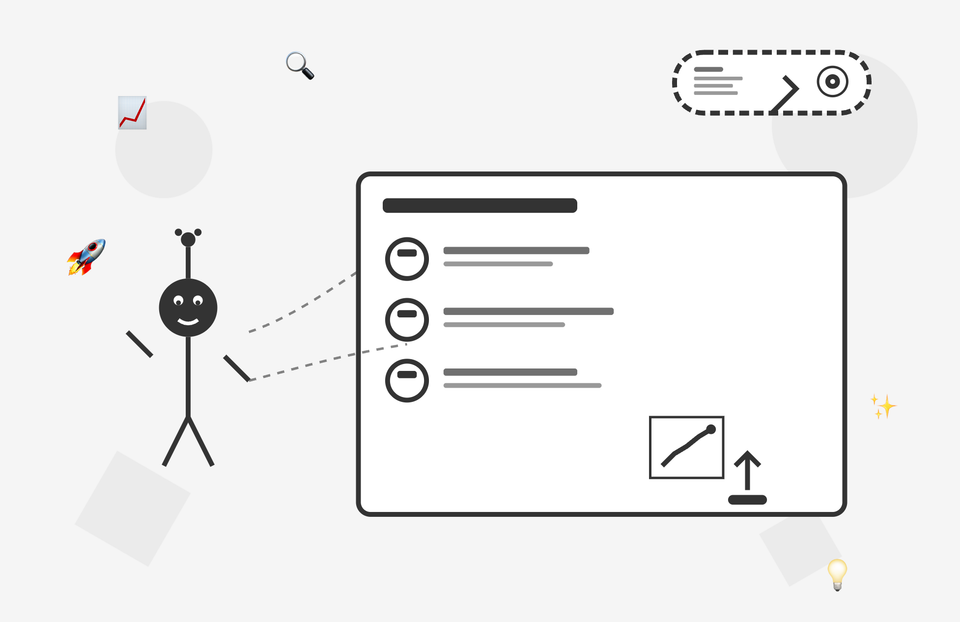
AI Overviews are taking our clicks at a breathtaking pace. The nature of information retrieval is changing in front of our eyes. And it can feel a bit... overwhelming.
I want to look at 3 cornerstone activities for optimizing for AIOs so we have a chance of remaining in the conversation.
Then I'll explain how I've been analyzing AIO content and trying to adjust answers, which will help you to figure out what's working now and what might work in the future.
AI Overviews aren't going anywhere
We need to optimize for AI Overviews. There's no getting around it.
In the past, I thought AI Overviews might eventually be phased out because they seemed pretty unpopular and clunky. I've changed my mind, thanks to this research:

I'd encourage you to click through and read the findings, but here's a quick summary.
- 42%+ of respondents have experienced inaccurate or misleading content in AI Overviews
- 71%+ experienced at least one significant mistake in an AI Overview
- Only 8.5% of respondents always trust AI Overviews
And yet?
- More than 40% "rarely or never" click through from AI Overviews to the source material (😬)
- Given the choice to enable or disable AI Overviews, only 36.6% would turn them off
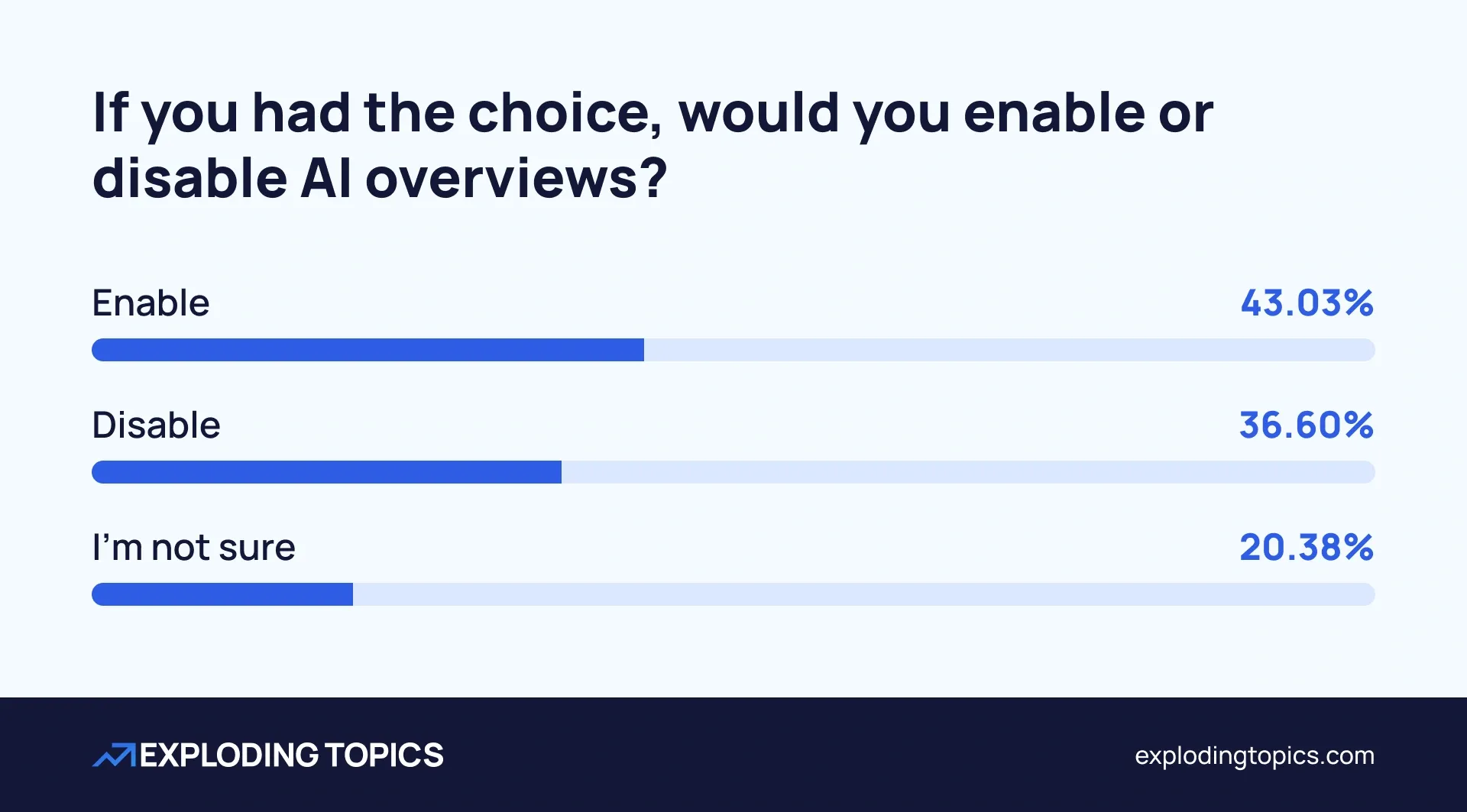
If you work in content production, I fully understand why this is disheartening to read.
It's rough to think you've spent days on a fantastic article, only for it to be badly summarized in an AIO.
And we all see it. My most recent encounter with an AIO claims Medium.com is a group of SEO experts.
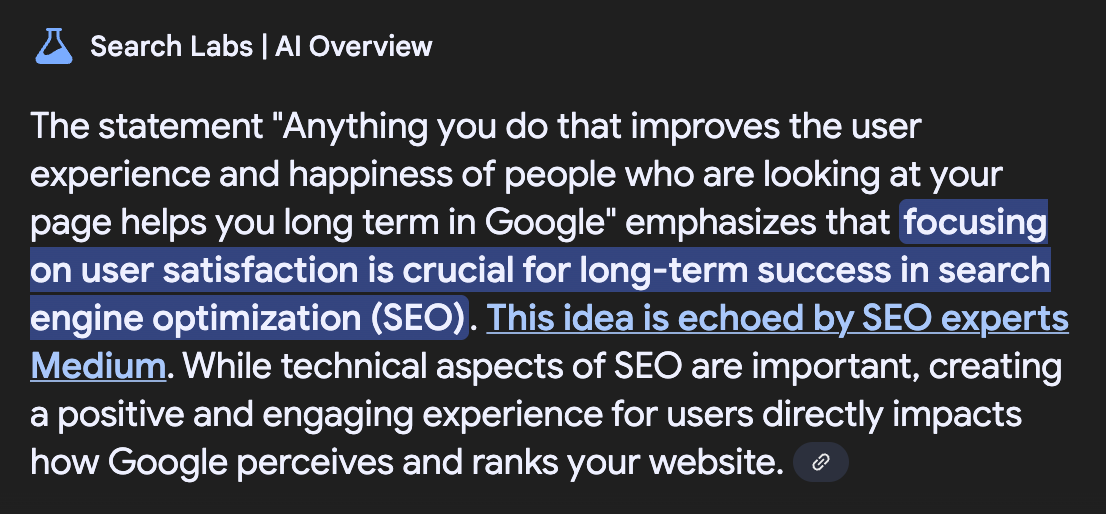
(This is my new favorite, alongside the AIO that claimed Amazon.com is a renowned philosopher.)
But when I really think about our survey results, it makes sense.
It aligns with my personal view of LLMs and the way I use them:
- I find them helpful as a tool, even though I know they are often wrong and unreliable
- I still use them because the information I get is helpful enough
So I've changed my view. I think AIOs are here to stay.
And I think this gives us an advantage. We know people like AIOs, so let's learn to live with them. The faster we do that, the better.
How do we optimize for AI Overviews?
If you're in a content-related role, here's my advice for the short term.
Write high-effort content
There's a strong correlation between good organic rankings and inclusion in the AIO.
Experts don't agree on the exact number - possibly because it varies depending on intent.
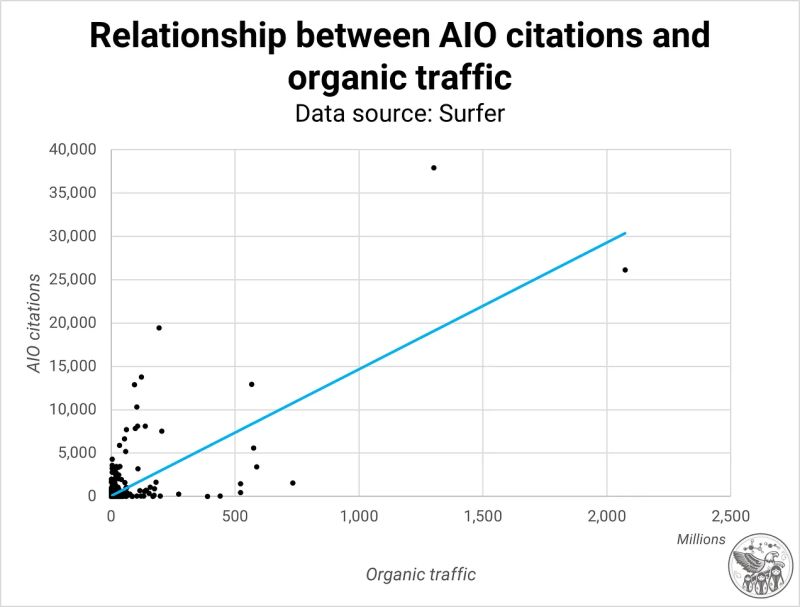
I think we can agree that ranking well in Google is a massive advantage.
In fact, AIOs are the easiest AI-related search tool to optimize for because they're grounded in results we already work with.
We know we need to write "high-effort content" to rank. Backlinko has researched this and found two important factors:
- Comprehensive content outperforms thin content
- Increased time on site improves rankings
Increased effort results in outcomes like:
- Brand new information
- An authentic take
- Helpful diagrams, videos, and images
- A close match to search intent
- An author you recognize or trust
These are all triggers for backlinks, shares, and increased dwell time.
Look at the Quality Rater's Guidelines for more evidence:
the quality of the MC can be determined by the amount of effort, originality, and talent or skill that went into the creation of the content
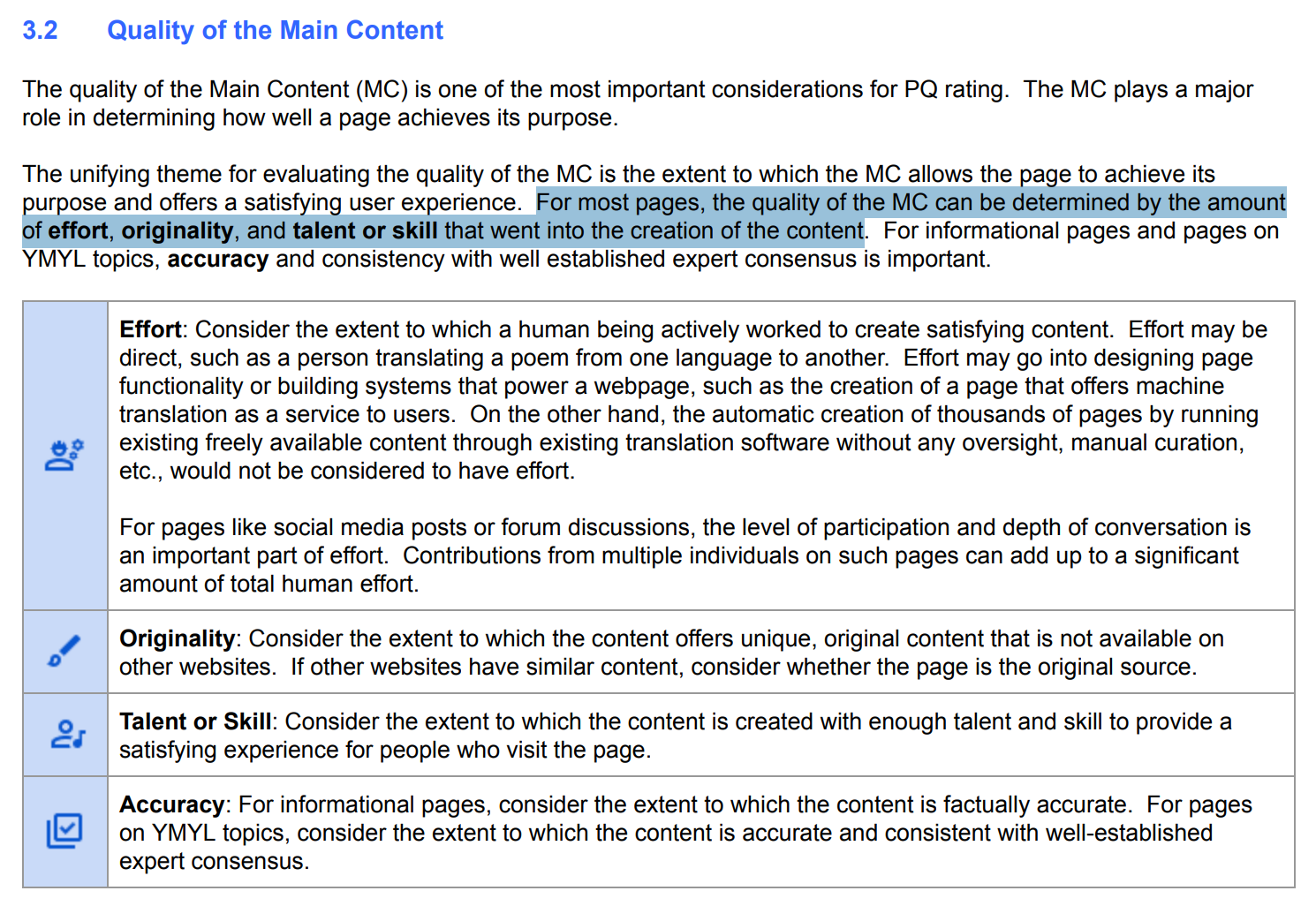
People do not want to share low-effort content, be it AI-generated or human-made. We share, link, and scroll because we recognize effort, originality, talent, and skill.
Interestingly, in the Exploding Topics survey, we found that people don't really care about the AI-generated content that's out there now. But 74% said they wanted a pause or reversal in the amount of AI-generated content online.
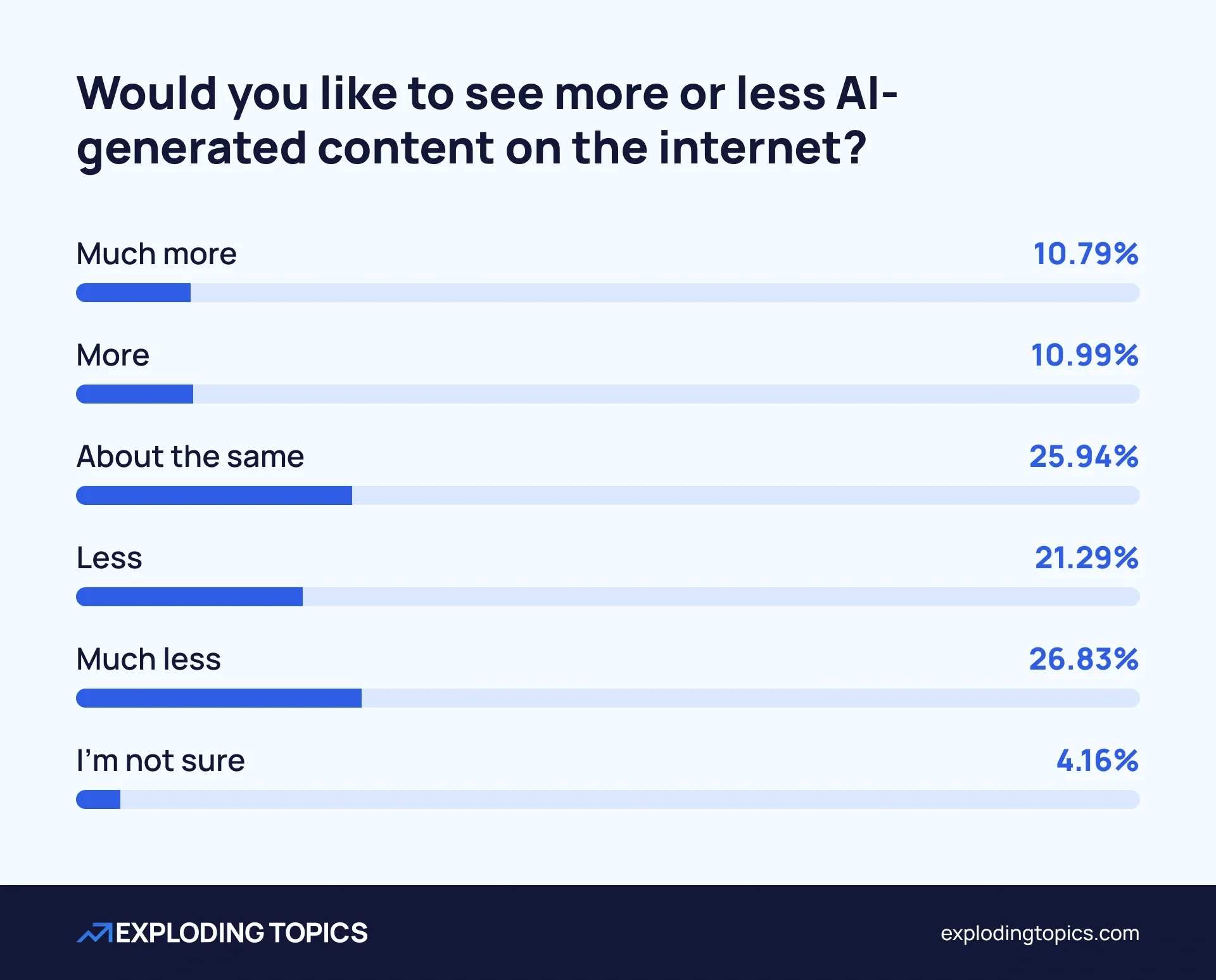
And we're starting to see AI content drowning out real, human experiences.

Pinterest has already added AI labels for this reason.
So the best advice I can give you now is to put effort into creating amazing content that can compete with the absolute best, highest quality content in the world.
If your competitors are saturating their sites with AI, being the only humans in the room could work in your favor.
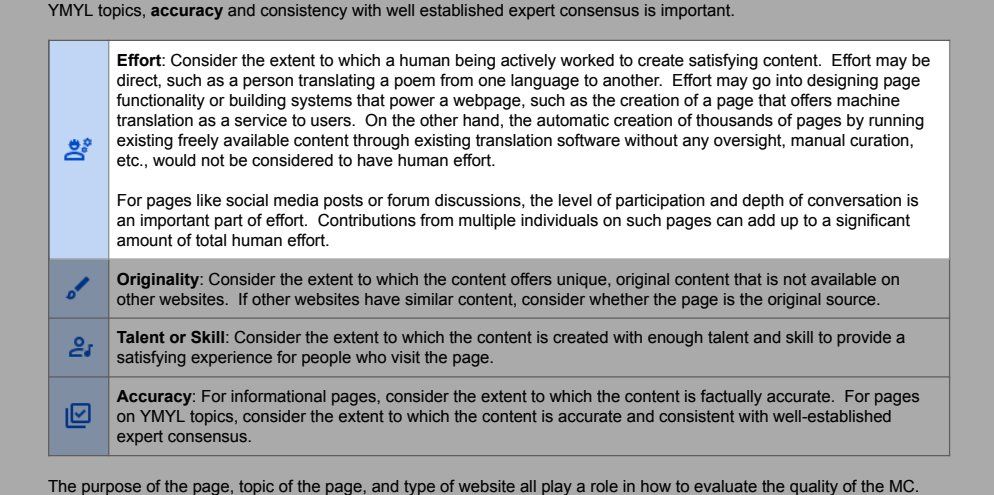
Write "AI-ready" content
Everyone who works in content must understand how that content is consumed by a new generation of search engines.
For AIOs, we need to look at whether our passages are answering questions.
As we know from past discussions, Google has been using passages to rank content for some time in organic search. I won't go over the points I made in my passage retrieval post. But I will re-emphasize what we need to change:
Instead of thinking about pages, we need to look at smaller chunks (passages) and larger groups (topical clusters).
It's our friend content chunking:
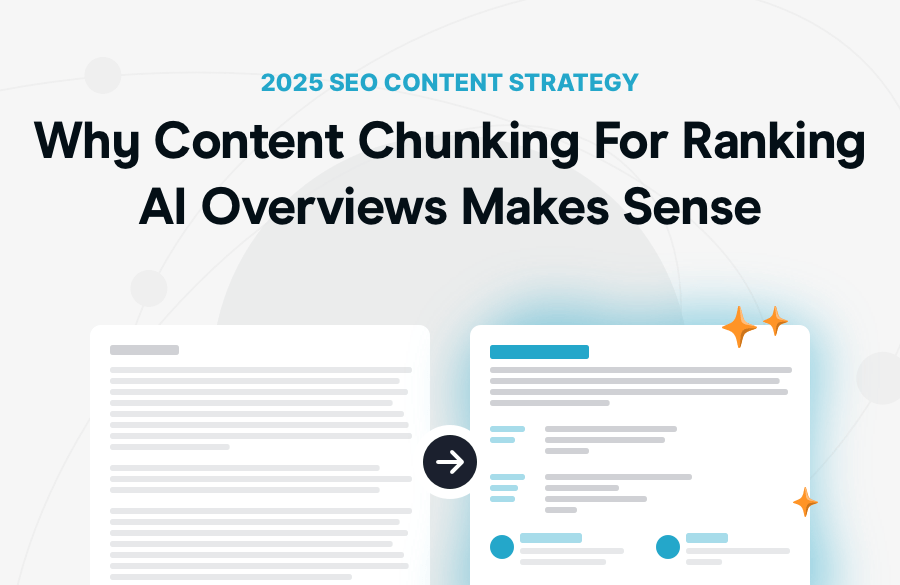
Looking at pages as complete units of content still works for now, but I think it will die off as traffic sources diversify.
Optimize for featured snippets
In the regular SERP, featured snippets are the closest thing we have to AIOs.
The content teams I've worked with have had a ton of success optimizing for featured snippets.
Why? The writers are really good at giving concise, complete definitions and summaries.
If you have a workflow for that, use it now, and use it consistently.
If you don't optimize for featured snippets yet, I use Steve Toth's SnippetBrain GPT all the time and highly recommend it:

SnippetBrain helps you to write short, information-dense content. It eliminates unnecessary words.
Google likes to show short, informative phrases in a snippet, and I see similar content popping up in AI Overviews and Google-generated meta descriptions.
How do we analyze AI Overviews?
To analyze AI Overviews, I want to share a trick that Marie Haynes shared on LinkedIn. This is a great way to look at the AIOs you already have so you can figure out what's working so far.
Here's a summary. (I apologize to Marie - I have butchered her post to quote it here briefly.)
First, use a tool (I use Ahrefs) to extract keywords that are ranking in AIOs. In Ahrefs, enter the site's url --> Click organic keywords --> Add filter --> SERP features --> Where target ranks --> AI Overview.
Then, export those into a CSV.
Our first prompt will classify our keywords.
Next, we'll prompt ChatGPT to make a visualization of this info.
Here's the original post with all prompts:
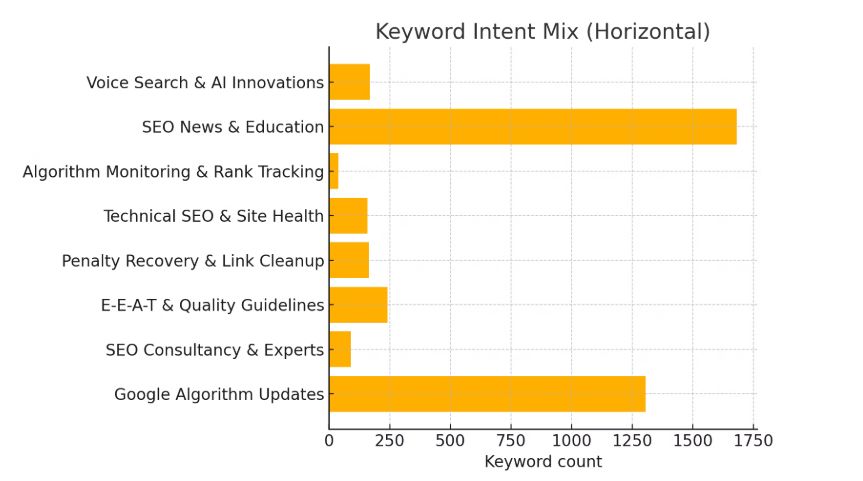
I got some really good AIO insights frorking through this exercise with some client sites.
(Keep in mind that I can't share client screenshots, so blurry ones will have to do.)
One site has a lot of AIOs in one bucket. It that dwarfs the others.
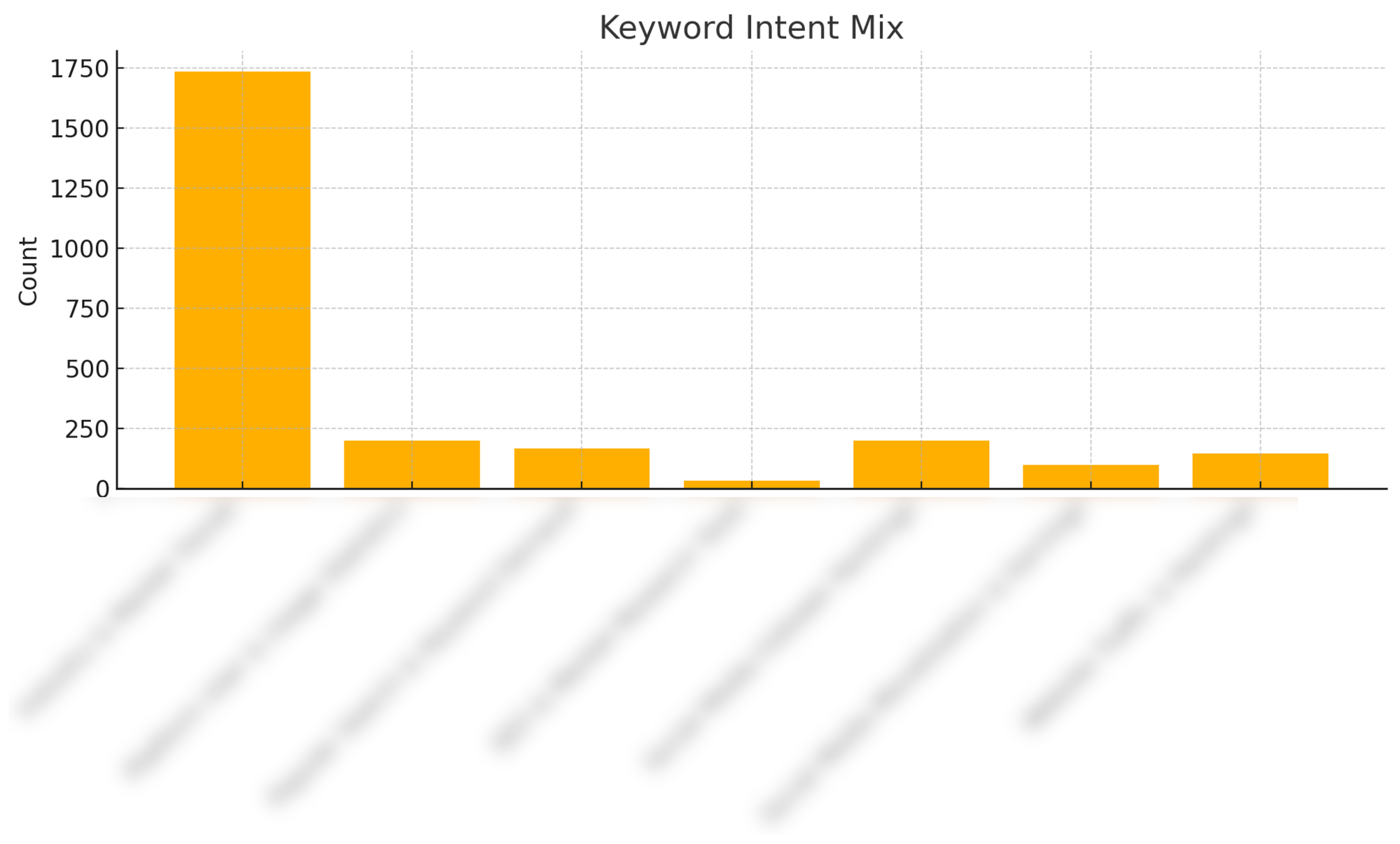
I figured I'd try to break that big one down into "subintents" by running the analysis again that group. That gave me some insights into what is working so well.
Then I realized that I could combine this with keyword gap analysis. So I tried this prompt with Deep Research:
Review the keywords again. I want you to look at the content on the [site] blog which is located at [URL]. Do any of these keywords appear to be content gaps? Group any keywords that are not represented by existing content into topical clusters. Please list them in a table along with 3 suggestions for suitable articles that would meet search intent for the cluster.
As always, remember that you're in the driving seat whenever you use an LLM.
While o3 is great for tasks like this, it's the most 'confidently wrong' model that I've used, so read what it generates and make sure you agree with it.
How can we adjust answers in AI Overviews?
Is it possible to change the content of an AI Overview? Yes.
Is it easy? Not always.
Here's an interesting finding to start us off. AIOs are extremely volatile. They change more frequently than the SERPs.

In my post on how AI Overviews work, I looked at the SGE patent to try to understand the feedback mechanism Google is using.
It seems to be based on interaction signals.
This might explain why AIO answers change a lot.
But interaction alone isn't enough.
Let's try asking Google how many integrations Zapier has. Zapier's content is accurate, but there are plenty of third-party sites that provide an outdated figure.
Here's the AI Overview:

And now let's ask Gemini the exact same question.
Same day, same account, same browser:
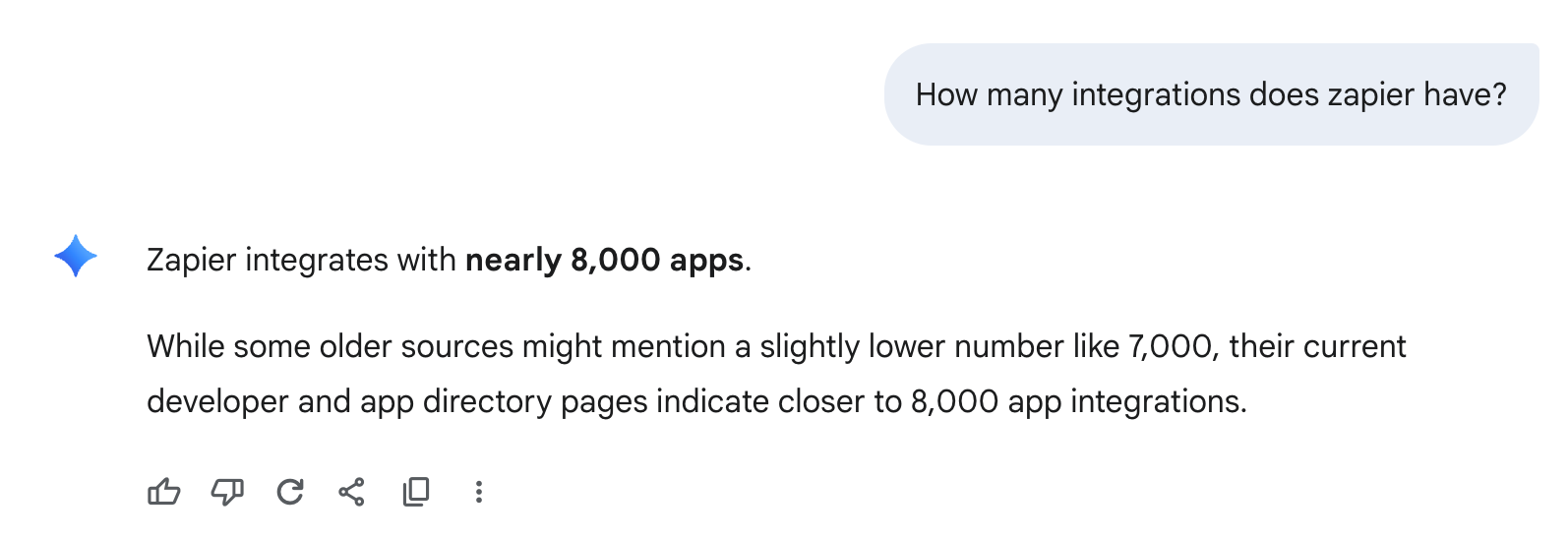
Why is this happening?
AI Overviews have a recency bias. In fact, they seem to lean towards quoting content published in the last 2 years.

So: if AI Overviews have a recency bias, why is the AIO getting this wrong?
Consensus. Decayed content is fighting with fresh content in the AIO.
And decayed content can appear to be more trustworthy because there are more sources saying the same thing.
Throwing new content at the problem will not solve this. Notice how the incorrect AIO quotes Wikipedia, the most authoritative source on the planet, which says 8,000. It still ignores it.
There's a great example of this issue in this blog post called Accuracy Loses to Consensus.
In this example, an inaccurate fact stayed in an AI Overview for 4 months, even though newer information was available:
In June 2025, we asked Google: “Does Squarespace support AMP?”
The AI Overview said yes. That was wrong—Squarespace had deprecated AMP support four months earlier.
We run a niche marketing blog that Google’s core ranking systems have historically surfaced well. So when the only factually correct, ranked article gets bypassed by AI Overviews, it suggests a deeper issue in how content relevance is being weighted.
This is why I believe content decay is going to impact conversions more with AI search than in organic results.
Incorrect information will decrease clicks.
If you release a new feature, the AIO might claim it doesn't exist. That's going to impact sales.
In the same Collaborada post I linked to above, the authors say they were able to change the incorrect answer by reporting it. (I'm assuming they used the 'thumbs down' button.)
I've also tried to adjust AI answers about myself. Publishing new, correct information did not solve the problem of incorrect information appearing in answers. The only solution was to update the incorrect information at the source.
Here's an example where the content in the answer changed, but the old citation still showed:
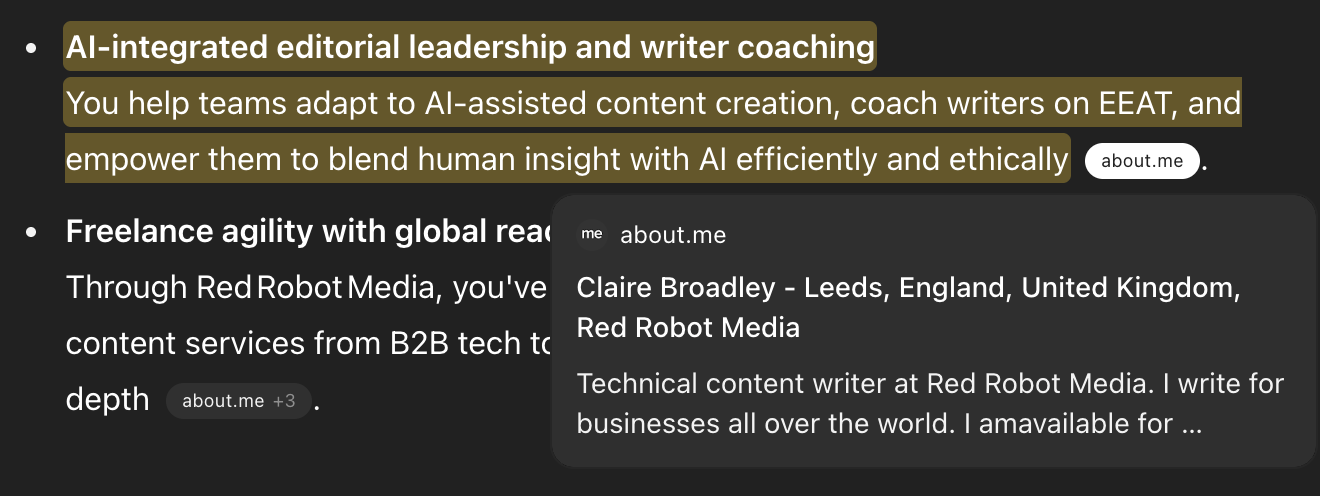
Fixing decay is going to be harder than it used to be.
For now, I think our best strategy to change and adjust AIOs is:
- Dealing with content decay now, and maintaining that work consistently
- Always hitting 👎 on an AI Overview that's wrong.
This is one piece of a very large puzzle
AI Overviews are a completely different challenge to organic search, but they have strong connections to organic results. That makes things a little easier for us.
Other AI search engines require a separate optimization strategy: conversations over clicks. That includes AI Mode, ChatGPT search, Perplexity, and Claude.
If it feels overwhelming, here's the strategic breakdown I'd use today:
- Optimize for immediate impact in organic results: AI Overviews are taking traffic now. Are you going to optimize for AIOs or try to target SERPs without them? This is going to vary for each site, but take a benchmark today and work towards a goal you can measure.
- Use AI Mode (via a VPN if you have to) and understand how conversations evolve to include your content. Look at Search Console data to find out what kind of queries are showing up and what people are clicking.
- Experiment with ChatGPT search. It's the next biggest player, but still represents a small fraction of search traffic overall.
- Remember that things are changing rapidly. There are signs that Google is moving some AIOs down the SERP, which means the best strategy is still to rank in the top 3 organic positions.









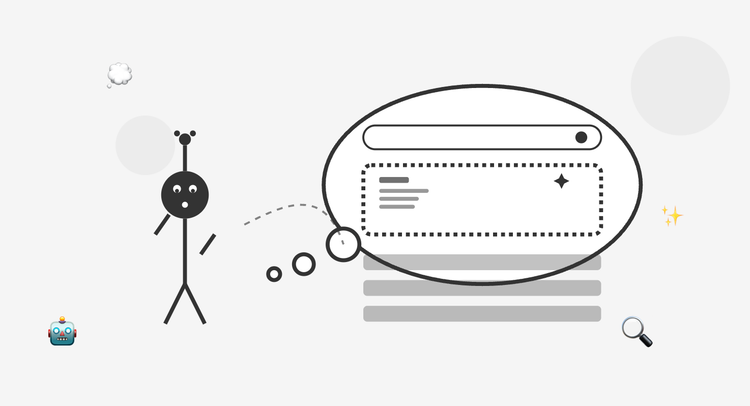
Comments ()